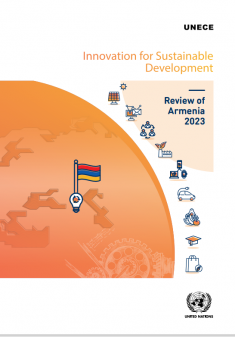Since its independence in 1991, Armenia has been making significant strides towards innovation-led sustainable development. Despite the hurdles Armenia has faced, including regional instability and the global COVID-19 pandemic, the country has managed to maintain a competitive information and communication technology (ICT) sector while fostering an energetic entrepreneurial scene. The success of the ICT sector, complemented by robust tourism, mining, food processing, and agriculture sectors, underscores Armenia's innovation potential.
However, ensuring sustained economic growth and social development remains a challenge as the old drivers of growth run out of steam. Despite seeing strong economic growth over the past decades, Armenia has recently faced a slowing economy and increased volatility in the face of regional instability and global crises. Its dependence on remittances and low-productivity activities, such as agriculture, coupled with high unemployment, outmigration, and reliance on exports of low value-added commodities, presents structural challenges for sustainable growth.
Innovation, a systematic exploration of new ideas, products, and processes, is a central catalyst in overcoming these hurdles and bolstering Armenia's sustainable development. Establishing greater intergovernmental coordination, increasing reliance on evidence-based policymaking, increasing diaspora engagement, and reassessing current innovation infrastructure mechanisms, is critical to foster innovation. Through an assessment of the country's innovation policy governance, institutions, processes, and mechanisms, the I4SDR offers concrete policy recommendations for achieving sustainable, inclusive, and innovation-led growth. This review was made possible by funding from the Government of Sweden and involved hundreds of innovation stakeholders, and will inform the reform efforts, strategies of the Armenian Government, and future capacity-building programs.
The I4SDR includes two elective chapters dedicated to two key aspects of Armenia's development:
- Chapter 4 focuses on improving the effectiveness of the innovation infrastructure. It recognizes the need for a more strategic, coordinated approach, including technology transfer support and efficiency tracking.
- Chapter 5 explores the potential of engaging the Armenian diaspora, particularly in spurring innovation in the agriculture sector. With the diaspora almost three times larger than Armenia's local population, this resource can be instrumental in transferring skills and driving innovative projects.
To guide Armenia in addressing these innovation policy challenges, the I4SDR also provides specific policy recommendations under three main categories: Strengthening innovation policy governance in Armenia, Improving the effectiveness of the innovation infrastructure, and Engaging the Armenian diaspora to spur innovation in the agriculture sector. These recommendations will be instrumental in shaping future UNECE support to Armenia.
